We've all run into ingredients in chocolate that we couldn't recognize, much less wanted to put into our bodies: E492, vanillin, cocoa butter substitute, artificial flavor, etc. I'm not even talking about chocolate inclusions, either, which are themselves a whole different topic (which I cover here).
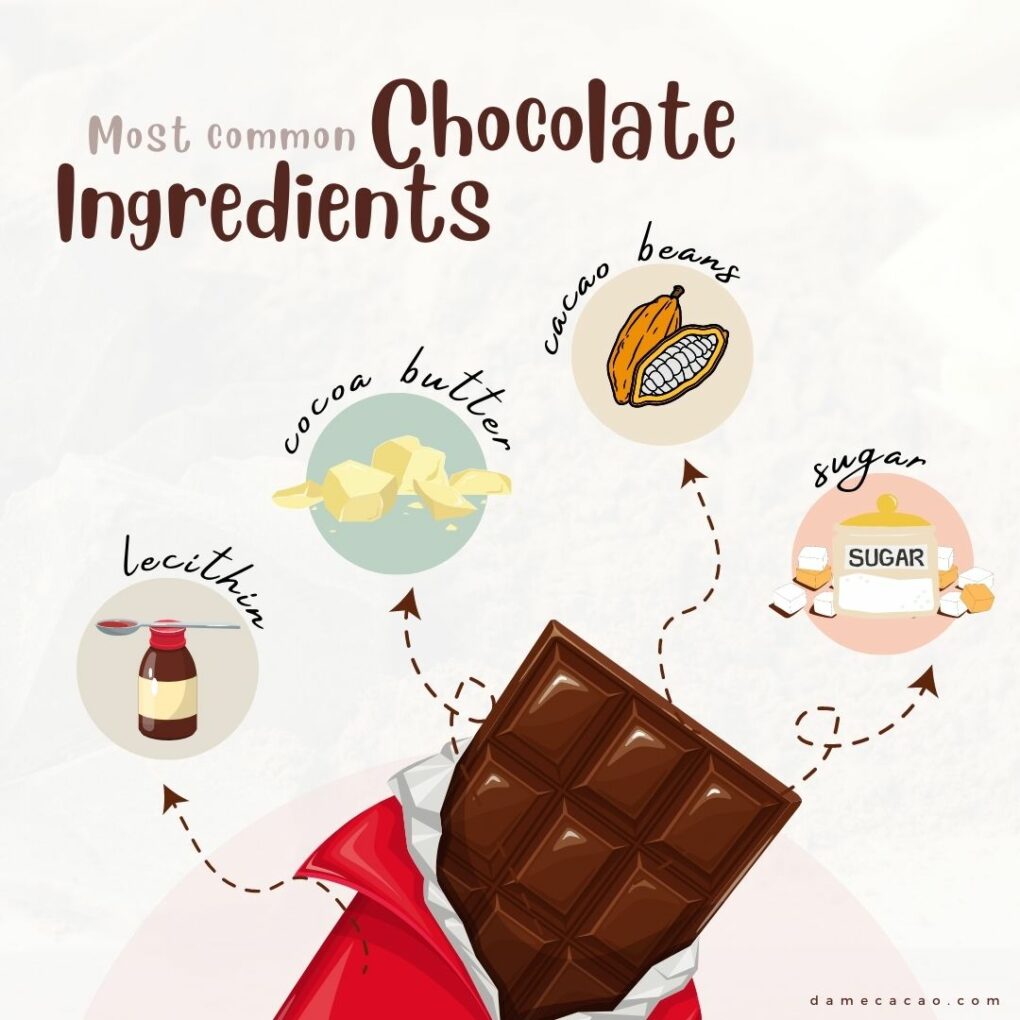
Yet we keep eating these mystery chocolates, generally because we just don't realize there are better options out there. So as a primer, these are the basic ingredients in chocolate:
- Cacao beans
- Cocoa Butter
- Sugar
- Milk Powder (in milk and white chocolates)
A high quality chocolate will generally use just two ingredients in a dark chocolate, three in a white chocolate, and four in a milk chocolate, though there are some exceptions for flavored chocolates (see below).
There are also some ingredients which aren't unusual or harmful to find in your chocolate bar, but we'll get into those in a bit. Because if you choose carefully, the 9.5 pounds of chocolate that the average American eats will confer you the many promised benefits of eating chocolate.
High quality chocolate is a significant source of magnesium, iron, zinc, copper, and manganese, as well as being high in antioxidants and heart-healthy flavanols. Eating chocolate has been proven to release serotonin, dopamine, and oxytocin, all of which are known as the "feel good" chemicals.
But beyond that, it's been shown to boost your immune system and reduce overall inflammation, especially when consumed regularly. So let's take a look at which chocolate ingredients have the most positive impact!
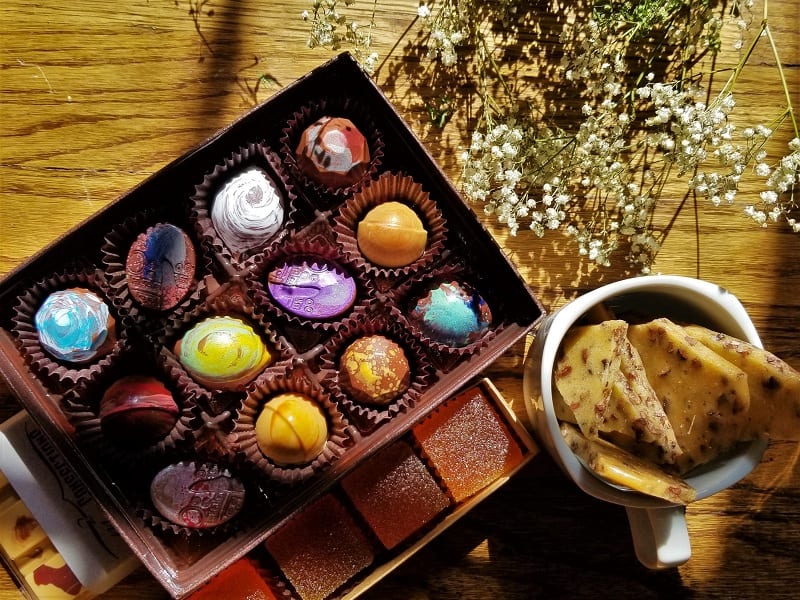
Jump To
Cacao Beans (Cocoa)
Without cacao beans, there is no chocolate. Cacao beans, also referred to simply as cacao or cocoa, come from the fruit of the tropical tree Theobroma cacao. They're actually the seeds of the plant, and to prepare them for chocolate making, they go through a long process.
First they're quickly fermented after harvest, and then dried, packaged, shipped, sorted, roasted, peeled, and ground into chocolate liquor. Cacao beans that are shipped across oceans must be sprayed with fumigating materials before being inspected and then unloaded into the country, even organic ones.
From there, the other chocolate ingredients are usually added (see below). When the chocolate liquor is processed by itself, the resultant product is called cacao mass or 100% chocolate. It can be used for flavoring, baking, and any number of other edible applications.
Cacao is naturally about half fat, so sometimes this cacao mass is pressed for its fat (called cocoa butter). After this process you're left with a cacao cake, which is ground into cocoa powder, sometimes then alkalized or dutched (both words mean that it was chemically treated to standardize the & flatten the flavor).
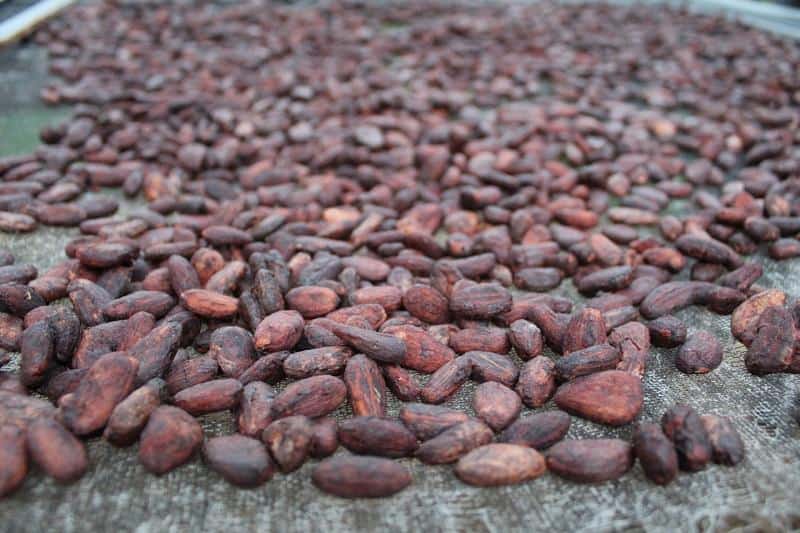
Cacao is good for you. Therefore, as long as there's not too much sugar or other unhealthy ingredients, chocolate is healthy. Cacao is high in magnesium and potassium, as well as heart-healthy antioxidants, making it a naturally healthy food.
Many years back it even became trendy to consume 70% dark chocolates, specifically for those health benefits. But over the years, we've come to understand two things: 1) not all 70% chocolate is created equal, and 2) you can get these benefits of cacao at any percentage; they just may be outweighed by all the other ingredients in the chocolate.
Note that on ingredients lists, cacao is also known as: cocoa beans, cacao beans, cocoa nibs, cacao nibs, cocoa liquor, cacao liquor, chocolate liquor, cocoa solids, cacao solids, cocoa mass, cacao mass, baking chocolate, baker's chocolate, unsweetened chocolate, or merely "chocolate."
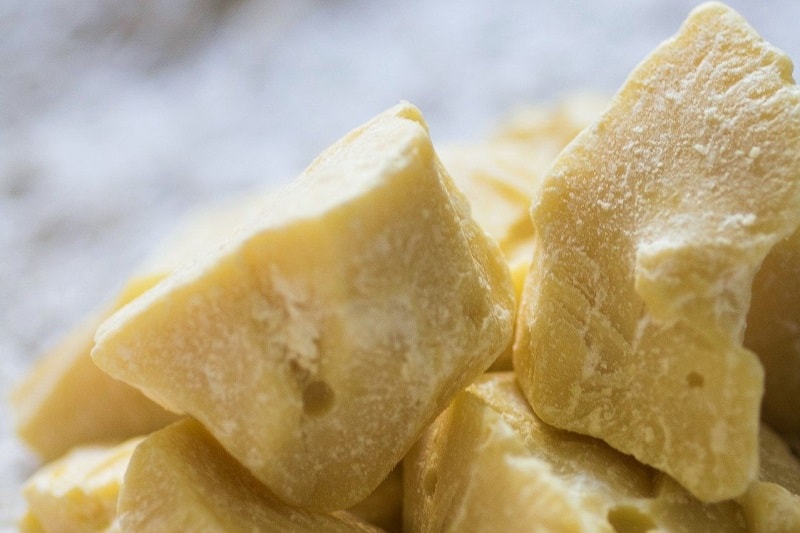
Cocoa Butter (Cacao Butter)
There's so much info out there on cocoa butter (also known as cacao butter), yet it still seems so mysterious to many. If you're like me, you primarily heard of cocoa butter while growing up because it was said to be great for stretch marks and dry skin.
There was even a little yellow tube of it that you could buy in the pharmacy. But what is cocoa butter, and how does it relate to the cocoa bean? Cocoa butter is the fat of the seeds of the Theobroma cacao tree, a tropical plant native to South America.
It makes up roughly half of each cacao "bean," and ever since they figured out how to extract it, humans have been using this fat's unique characteristics to their own advantage. Millennia ago, the Aztecs would pour cacao beverages between containers in order to froth it up, with the cacao beans' cocoa butter.
This preparation method would thicken up the liquid and maintain its hot chocolate foaminess. Many centuries later, chocolate makers figured out how to press cocoa butter from the seeds, and humans began to use it topically.
Cacao butter melts right around body temperature, and is known to help the skin heal from trauma and lock in moisture, as well as being an aromatic addition to any body care routine. The four fats which make up 99% of cocoa butter are: palmitic, linoleic, stearic, and oleic.
Of these four, only one is bad for your heart (palmitic acid), with the other three being either neutral or actively good for hearth health. Since cocoa butter is wholly unique in the plant world, it's irreplaceable, though that doesn't stop companies from trying.

Sugar (Cane & Otherwise)
While sugar is largely demonized, in the case of chocolate, it's a bit of a necessary evil. Chocolate's base ingredient of cacao can be quite bitter and lacks any inherent sweetness, so it's necessary to balance out the alkaloids that both make it bitter and make it healthy.
But fear not, as modern marvels of flavor have made it such that you can even have a milk chocolate with higher cacao content and less sugar than your average dark chocolate. The key with sugar in chocolate is balance.
Nowadays some makers are even turning to sugar-free alternatives or simply different sweeteners, like coconut sugar. The most common sugar used in chocolate is still white sugar, derived from either beets or sugarcane, but other forms and types of sweeteners are rising rapidly in popularity. The most-used of these sweeteners include:
- White Sugar (Refined Sugar)
- Raw Sugar (Unrefined Sugar, Evaporated Cane Juice)
- Coconut Sugar (similar to Palm Sugar)
- Maple Sugar
- Honey (*only used in high-moisture products)
- Erythritol or Xylitol
- Monk Fruit or Stevia (usually in conjunction with Erythritol)

Milks (Powdered)
Unfortunately, adding milk or heavy cream to chocolate is the base for making chocolate truffles, not for making milk chocolate. Due to its high-fat nature, chocolate cannot take on liquids like milk, and therefore powdered milk must be used.
A chocolate maker will usually stick to one milk powder for their chocolates, but in recent years, some makers have begun preferring to use milk alternatives in order to make vegan-friendly milk or white chocolates.
The macronutrient profile of the powdered milk alternative is essential in these cases, and suitable (powdered) substitutes for powdered milk include:
- Coconut Milk
- Oat Milk
- Rice Milk
- Soy Milk
- Almond Milk
Lecithin (Soy, Sunflower, Etc.)
This is quite a common chocolate ingredient, even in the realm of craft chocolate. Lecithin is a brownish-yellow substance made up of phospholipids linked to choline molecules. It's found in animal tissues (including eggs) as well as some plants, most notably soy, sunflower, cottonseed, and rapeseed.
It's used in tiny amounts to decrease chocolate's viscosity, and in fact I wrote a whole post on various lecithins in chocolate. While I find the way that lecithins are extracted to be problematic— it involves hexane and sometimes bleach— they are used medically to stabilize cholesterol, so a little lecithin probably isn't going to do you any harm.
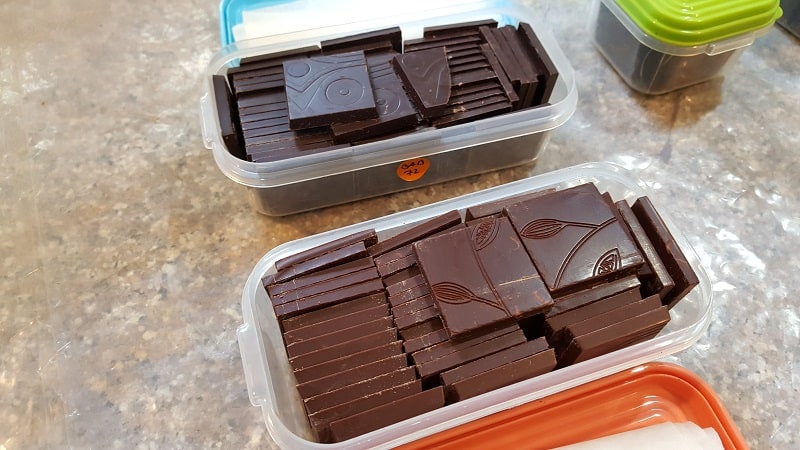
Extra Ingredients in Chocolate
Vegetable Oils
There are a few types of vegetable oils which are used in chocolate, namely palm oil, palm kernel oil, coconut oil sunflower oil, shea butter, and safflower oil. With the exception of coconut oil and some palm oils, all of these are generally liquid at room temperature, and none of them belong in your chocolate.
But when there is vegetable oil in chocolate, it's because it's being use to replace some or all of the cocoa butter, which is a much more expensive ingredient and of more value when sold to cosmetics companies. When you see "vegetable oil" in an ingredients list, it will always be combined with TBHQ, a preservative discussed below.
Vanilla
Vanilla is probably one of the most common additives in chocolate, and it's one of the originals: Aztecs used to use vanilla seeds to scent their ancient cacao beverages. The seeds, or "beans," of the vanilla plant are native to modern-day Mexico, but are now known around the world as a common flavoring.
Vanilla can't be naturally pollinated outside of its native Mexico, however, so when it's grown commercially it needs to be hand-pollinated, an expensive endeavor which explains why it's one of the world's most expensive commodities.
Vanilla extract is different from vanilla beans, in that it can be of varying strength depending upon the manufacturer. True vanilla beans are also much different from "natural vanilla flavor" or vanillin, which is extracted from tree bark (natural, of course, but definitely not vanilla).
If you taste vanilla directly, you'll notice that it has a slightly floral scent and a bitter taste, the latter of which is the reason why it's often left out of craft chocolate bars, so as to not contribute to the bitterness of the bar.
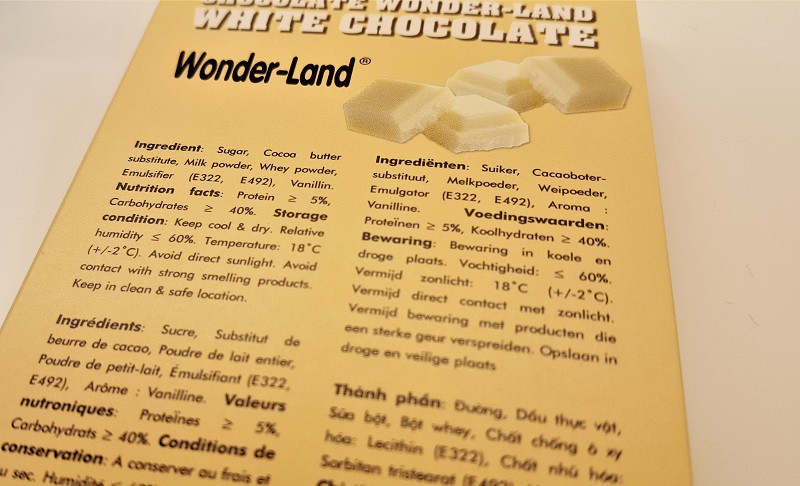
Natural & Artificial Flavors
There are so many potential sources of natural and artificial flavors that it's hard to clearly define them. The term is actually used as a catchall for any flavoring agent produced in a lab, although the distinction is drawn based on the source.
So-called natural flavorings can only be extracted from material that's technically edible (even animals), whereas artificial flavorings are synthesized from anything, including petroleum and clay. According to this article, "The FDA doesn’t require food labels to say what’s in their “natural flavor” unless the ingredients include a common allergen like milk, egg, fish, shellfish, tree nuts, wheat, peanuts, or soy."
This can be a potential cause of allergic reactions to chocolate, when flavoring agents are used but the origin of those flavors is not specified. Some common artificial flavors include things that we'd assume are easy to obtain, but which may not be cost-effective for a company to use directly, such as raspberry, vanilla, or even coconut.
The point is, natural and artificial flavors can be a landmine if you have a sensitive stomach or are on a specific diet.

TBHQ
TBHQ, or tert-Butylhydroquinone, is a food preservative most often used to extend the shelf life of unsaturated fats, such as the vegetable oils often found on the ingredients lists of cheap chocolates. In larger amounts, TBHQ is considered an irritant and an environmental hazard.
But in the relatively small amounts for which it's used in a chocolate bar, it's classified as an antioxidant, as it acts to preserve unsaturated fats from rancidity. These vegetable fats are used in place of added cocoa butter, which has a very stable shelf life but is much more expensive than vegetable oils.
PGPR
This is another additive that's used in order to reduce the amount of cocoa butter needed in chocolate. PGPR is derived from castor bean or soybean plus polyglycerol, and is usually used in conjunction with lecithin, to compound its effect of increased viscosity.
It's very commonly used in compound chocolate (that is, chocolate made with no added cocoa butter), as otherwise the mixture doesn't come together as easily.

Chocolate Ingredients FAQ
The word "chocolate" implies that someone is talking more generally about the topic of chocolate, whereas "chocolate" implies that they're talking about pieces of chocolate truffles or bonbons (filled chocolate).
The chocolate making process has many steps: growing and then harvesting cacao pods, breaking them and removing the seeds, fermenting the seeds, drying them, packing & shipping them, cleaning and sorting the cacao, roasting the cocoa beans, peeling them, and then grinding them into a paste. After adding sugar and any other ingredients, the mass is refined & conched for 24-72 hours before it's tempered and molded for packaging.
The most important ingredient in chocolate— and the only required one— is cacao beans, while the next most important ingredient is sugar.
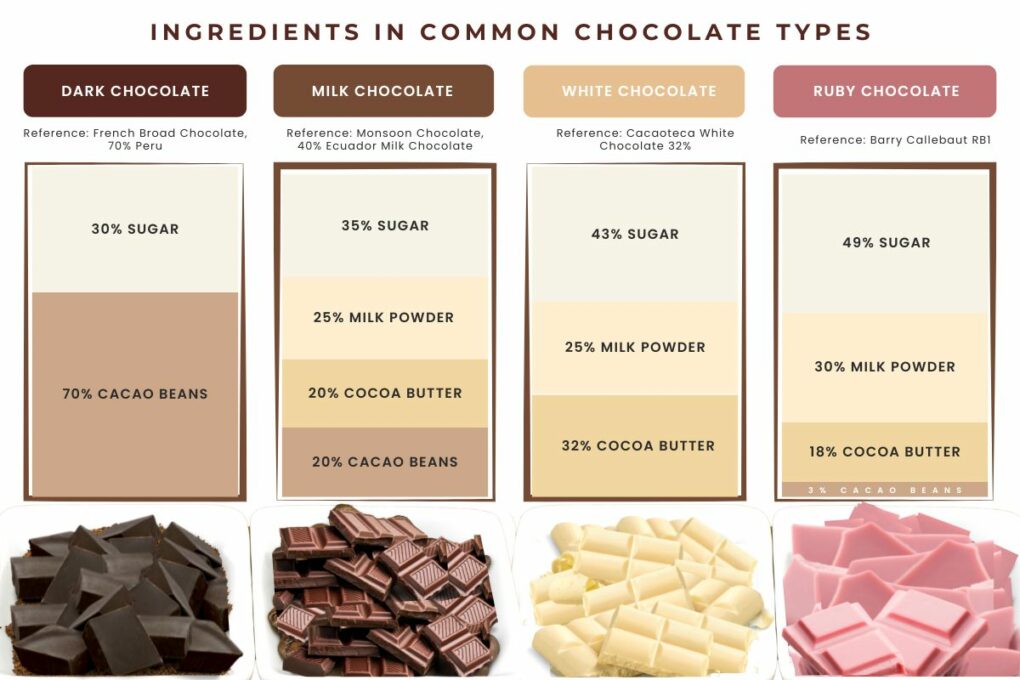
Are there any chocolate ingredients I missed? Leave a comment below and I'll check them out!

















SANJEEV SINGLA
So helpful!
Max
Thank you! I'm glad you found it helpful.
Mel
Does chocolate have any caffeine in it?
Max
Yes, but the amount varies widely. Dark chocolates will have the most caffeine, however, with more caffeine the higher the cacao content. Hope this helps!